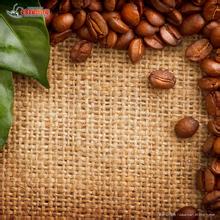What kind of quality and flavor Katim coffee beans belong to? introduction to the grinding scale of taste treatment method
What kind of quality and flavor Katim coffee beans belong to? introduction to the grinding scale of taste treatment method
Yunnan small grain coffee 3-year-old 4-year-old fruit tree.
Coffee is a short-day plant. Coffee has the characteristics of multiple flowering and concentrated florescence. The florescence of small seed coffee in Yunnan is from February to July, and the flowering period is from March to May. The flowering of coffee is greatly affected by climate, especially rainfall and temperature. Coffee flowers have a short life span of only 2-3 days. Small seed coffee usually opens at 3: 5 in the morning and blooms from 5 to 7 o'clock.
The development time of coffee fruit is longer. It takes 8 to 10 months for the fruit of small seed coffee to mature, usually from October to December of the year. Rainfall has a great influence on fruit development, and climatic conditions directly affect fruit development.
Typica: the oldest native variety in Ethiopia and southeastern Sudan. All Arabikas are derived from Tibika. The flavor is elegant, but the physique is weak, the disease resistance is poor, the fruit yield is less. Excellent manor beans such as the Blue Mountains of Jamaica, Manning of Sumatra and Kona of Hawaii all belong to Tibika. The top leaf of Tibika is red and bronze, which is called red top coffee. Tibika belongs to Arabica.
The covered field coffee base of Ning'er County Coffee Company planted 50 mu in July 1998, the site environment was unshaded, the level of management was medium, and the level of fertilization was low, but the soil fertility was high. Since 2000, the average yield per mu was 285 kg in 2001 and 2002, 340 kg in 2002, 293 kg in 2003 and 306 kg in 2003. The yield is 53% higher than that of PT and 91% higher than P4 (the average yield of PT is 200kg per mu and that of P4 is 160kg per mu).
Yunnan small-grain coffee is of good quality. Take Lujiangba small-grain coffee as an example: the percentage contents of the main components are as follows: crude fat 17.1, reducing sugar 0.93,starch 3.07,nitrogen 2.27,crude protein 1.419, ash 3.70,crude fiber 19.33, caffeine 2.14,9.20, moisture 6.8.
More than 100 years ago, Zhu Kula called "Ruokelai" (Yi language), which means crooked mountain road. In 1892, due to the arrival of the French missionary Father Tian, he combined the essence of Yi language with the romance of the French, so the name Zhu Kula came into being, and later generations translated it as "heaven on earth".
According to reports, in 1892, French missionary Father Tian used coffee fruit to breed the first coffee tree outside the church, and then cultivated more coffee trees and planted them around the church. Since then, the village of Zhukula began to grow coffee, and the village has been surrounded by coffee trees ever since. Qi Guanghui and Li Fusheng, the two oldest elders in the village, are both in their eighties this year. Together, they have witnessed the formation of the oldest coffee forest in China.

Important Notice :
前街咖啡 FrontStreet Coffee has moved to new addredd:
FrontStreet Coffee Address: 315,Donghua East Road,GuangZhou
Tel:020 38364473
- Prev

Flavor description of Colombian Rosa Coffee Bean introduction to the taste characteristics of varieties
Flavor description of Colombian rose coffee beans the taste characteristics of Colombian coffee varieties are mainly Arabica coffee (coffea arabica), that is, small fruit coffee (small grain coffee), relatively speaking, large fruit coffee (coffea robusta) is mostly grown in Africa of origin, such as the famous Madagascar coffee. There are several varieties of small fruit coffee, produced in the world.
- Next

What kind of quality and flavor Katim coffee beans belong to? introduction to the grinding scale of taste treatment method
Katim coffee beans what kind of quality and flavor description taste treatment grinding scale introduced Yunnan small-grain coffee 3-year-old 4-year-old fruit tree. Coffee is a short-day plant. Coffee has the characteristics of multiple flowering and concentrated florescence. The florescence of small seed coffee in Yunnan is from February to July, and the flowering period is from March to May. The flowering of coffee is greatly affected by climate, especially rainfall and temperature. Coffee flower life
Related
- Detailed explanation of Jadeite planting Land in Panamanian Jadeite Manor introduction to the grading system of Jadeite competitive bidding, Red bid, Green bid and Rose Summer
- Story of Coffee planting in Brenka region of Costa Rica Stonehenge Manor anaerobic heavy honey treatment of flavor mouth
- What's on the barrel of Blue Mountain Coffee beans?
- Can American coffee also pull flowers? How to use hot American style to pull out a good-looking pattern?
- Can you make a cold extract with coffee beans? What is the right proportion for cold-extracted coffee formula?
- Indonesian PWN Gold Mandrine Coffee Origin Features Flavor How to Chong? Mandolin coffee is American.
- A brief introduction to the flavor characteristics of Brazilian yellow bourbon coffee beans
- What is the effect of different water quality on the flavor of cold-extracted coffee? What kind of water is best for brewing coffee?
- Why do you think of Rose Summer whenever you mention Panamanian coffee?
- Introduction to the characteristics of authentic blue mountain coffee bean producing areas? What is the CIB Coffee Authority in Jamaica?

